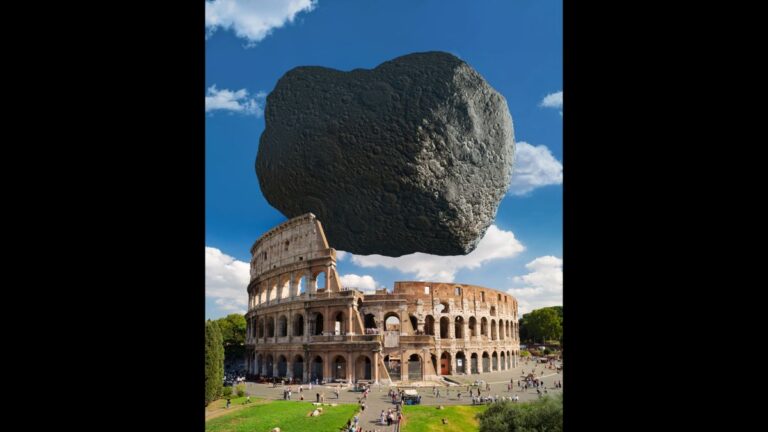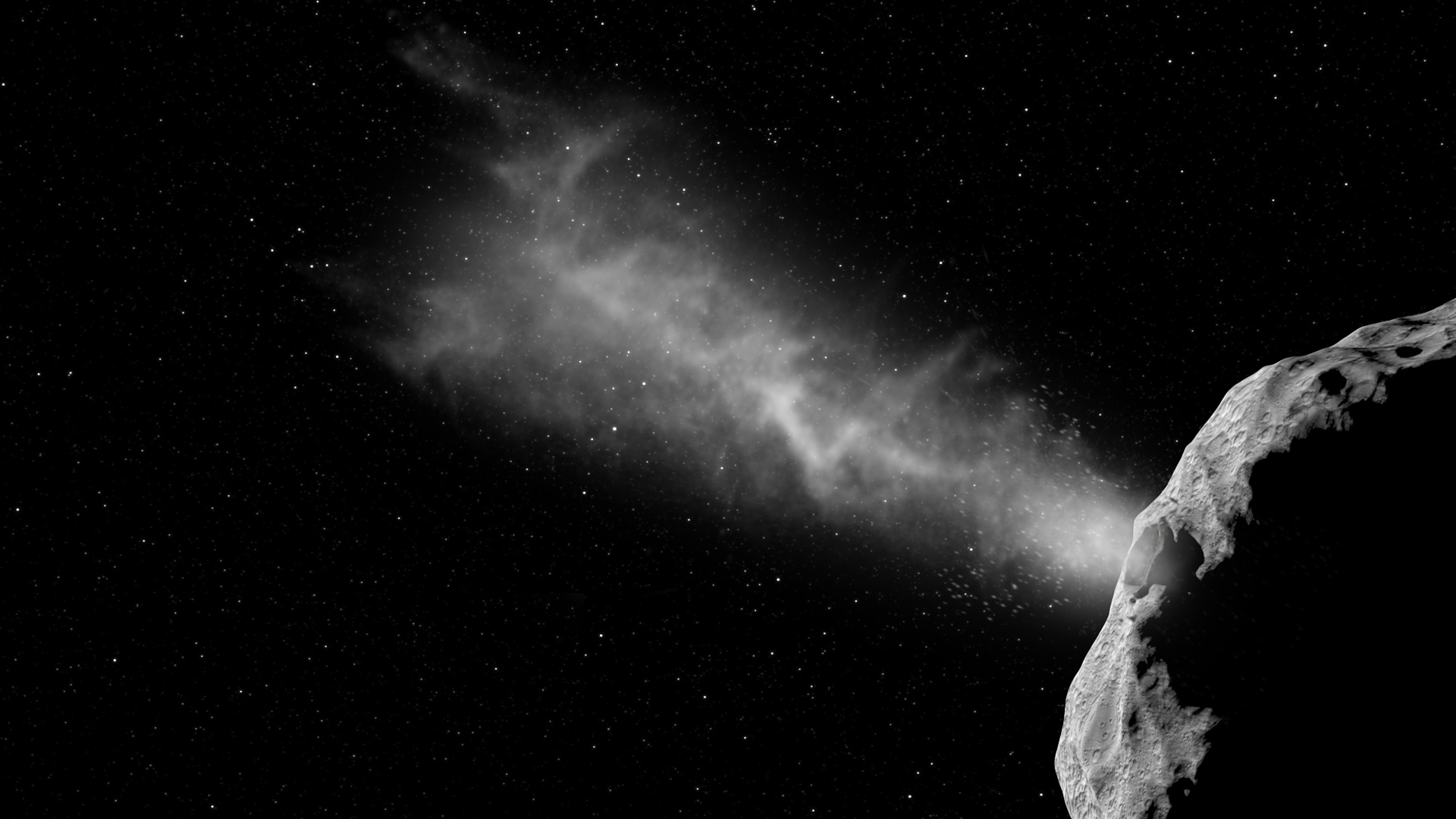
[ad_1]
NASA’s DART spacecraft didn’t nudge its target asteroid toward Earth, but there might be other space rocks of a similar size on a collision course with our planet — and that’s why DART’s mission is so important.
DART smashed into the 525-foot-wide (160 meters) asteroid moonlet Dimorphos as planned Monday evening (Sept. 26), successfully demonstrating the “kinetic impact” strategy of planetary defense. The dramatic impact sparked lots of speculation on the internet that NASA may have inadvertently sent an otherwise harmless space rock toward Earth.
Such speculation is groundless, of course. Mission team members have done the math, and they say there’s no way that DART’s death dive could meaningfully change the orbit of Dimorphos and Didymos — the larger asteroid in the binary system — around the sun. The only orbit that DART will measurably change is that of the moonlet Dimorphos around the 2,560-foot-wide (780 m) Didymos. In fact, the binary nature of the Didymos system serves like a security brake against unwanted orbital alterations, according to scientists.
“We move the little guy, but the big guy is like an anchor. It’s holding it back,” Andy Cheng, the chief scientist for planetary defense at the Johns Hopkins University Applied Physics Laboratory (APL) in Laurel, Maryland, which manages the DART mission for NASA, said in a news conference on Monday (Sept. 26). “The orbit of the whole system around the sun changes by such a tiny amount that it’s hard to measure.”
Related: Asteroid apocalypse: How big must a space rock be to end human civilization?
No threat at all
The Didymos system, although technically classified as potentially hazardous, is, in fact, not much of a worry for planetary defense experts.
“The closest distance [of the Didymos binary asteroid system] to Earth’s orbit is still on the scale of several million miles. It is not even a threat at all,” Tom Statler, a NASA planetary scientist, said in the same news conference. “There’s nothing that’s going to happen to it to make it a threat in any of our lifetimes.”
Astronomers model asteroid orbits for centuries into the future. But these orbits shift — for example, due to the gravitational pull of the giant planets of the solar system, such as Jupiter and Saturn. Those shifts are very slow, but it is possible that one day, an asteroid that is currently of no concern will become a threat.
More significant is the risk posed by asteroids we don’t know about yet. NASA and its partners estimate that only about 40% of asteroids wider than 460 feet (140 m) — about the size of Dimorphos — are currently known. Although none of the known asteroids poses a threat to Earth in the foreseeable future, space agencies around the world want to make sure they know how to avert such a space rock if it were to sneak upon us. Hence the DART mission.

How much damage would an asteroid the size of Dimorphos cause if it were to hit Earth?
A Dimorphos-sized space rock wouldn’t send us the way of the non-avian dinosaurs, which went extinct following an impact of an asteroid some 6 miles (10 kilometers) wide . A Dimorphos-sized rock, would, however, cause considerable destruction in the region where it crashed down.
“If [an asteroid as big as Dimorphos] were to fall on the city of London, windows would break over the whole southeast of England, and the damage in [the Greater London] area would be very extreme,” Gareth Collins, a professor of planetary science at Imperial College London, told Space.com. “There would be no survivors in the center of London because of the impact itself, and also because of the severity of the air blast.”
The impact of such an asteroid would produce a crater over 1 mile (1.6 km) wide and over 1,200 feet (370 m) deep, knocking down buildings tens of miles away from ground zero. The rock would likely explode close to the ground before its remnants hit the planet’s surface and cause extreme heating that would melt the ground and ignite fires in the area closest to the explosion, according to Collins.
“If the asteroid fell into the ocean, it would produce very large tsunami waves,” said Collins, who together with his colleagues created an online tool (opens in new tab)that enables researchers (and members of the public) to explore impacts of asteroids of various sizes. “But if it happened deep in the ocean, the waves would dissipate to quite low-amplitude waves before reaching the coast,” he added.
If such a rock fell into the ocean close to shore, however, the impact would be devastating. And so, although the probability of an asteroid hitting a major city is rather low, planet defenders want to have technology ready to ward it off just in case.
How will DART help us protect against other space rocks?
There are many asteroids of various sizes,masses and compositions, and a future planetary defense mission would only have one shot to get it right. So a carbon copy of the DART mission wouldn’t be appropriate for every threatening impactor — but the mission’s data will be invaluable for any future deflection campaign.
The DART experiment is accompanied by a massive data-gathering effort. There are hundreds of ground-based and space-based telescopes studying the effects of the impact at this very moment, as well as a little cubesat called LICIACube that traveled to the Didymos system with DART but was released two weeks ago to take images of the impact and its aftermath.
And, in 2024, the European Space Agency will launch the Hera mission, which will make additional measurements of Didymos and Dimorphos, including X-ray imaging of the rocks’ interiors, to learn as much as possible about the asteroids and the mechanics of DART’s impact. Using this data in sophisticated computer models, scientists and engineers will be able to accurately calculate the behavior of other asteroids and possibly one day design a real deflection mission with the highest chance of success.
Follow Tereza Pultarova on Twitter @TerezaPultarova. Follow us on Twitter @Spacedotcom and on Facebook.
[ad_2]